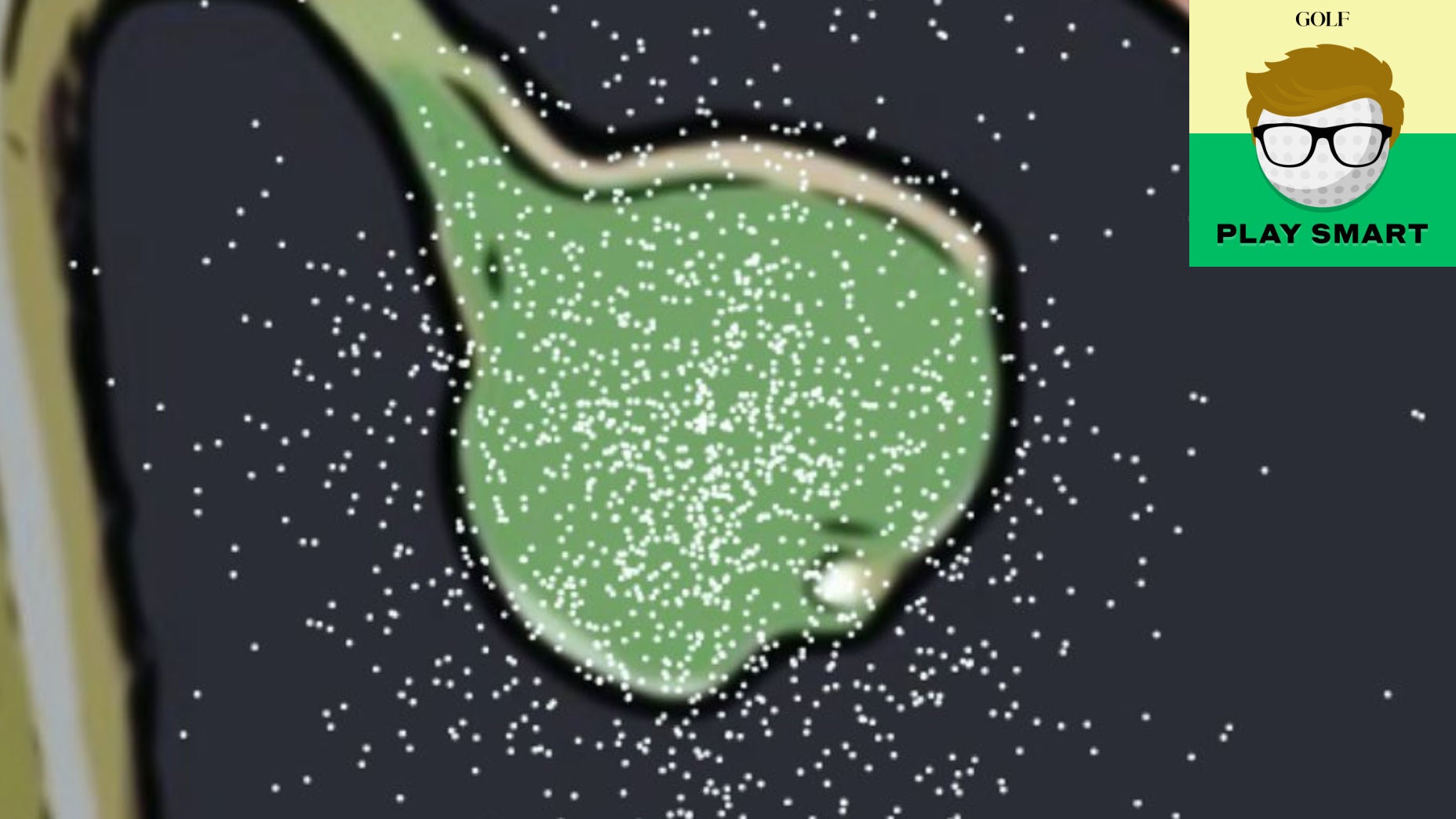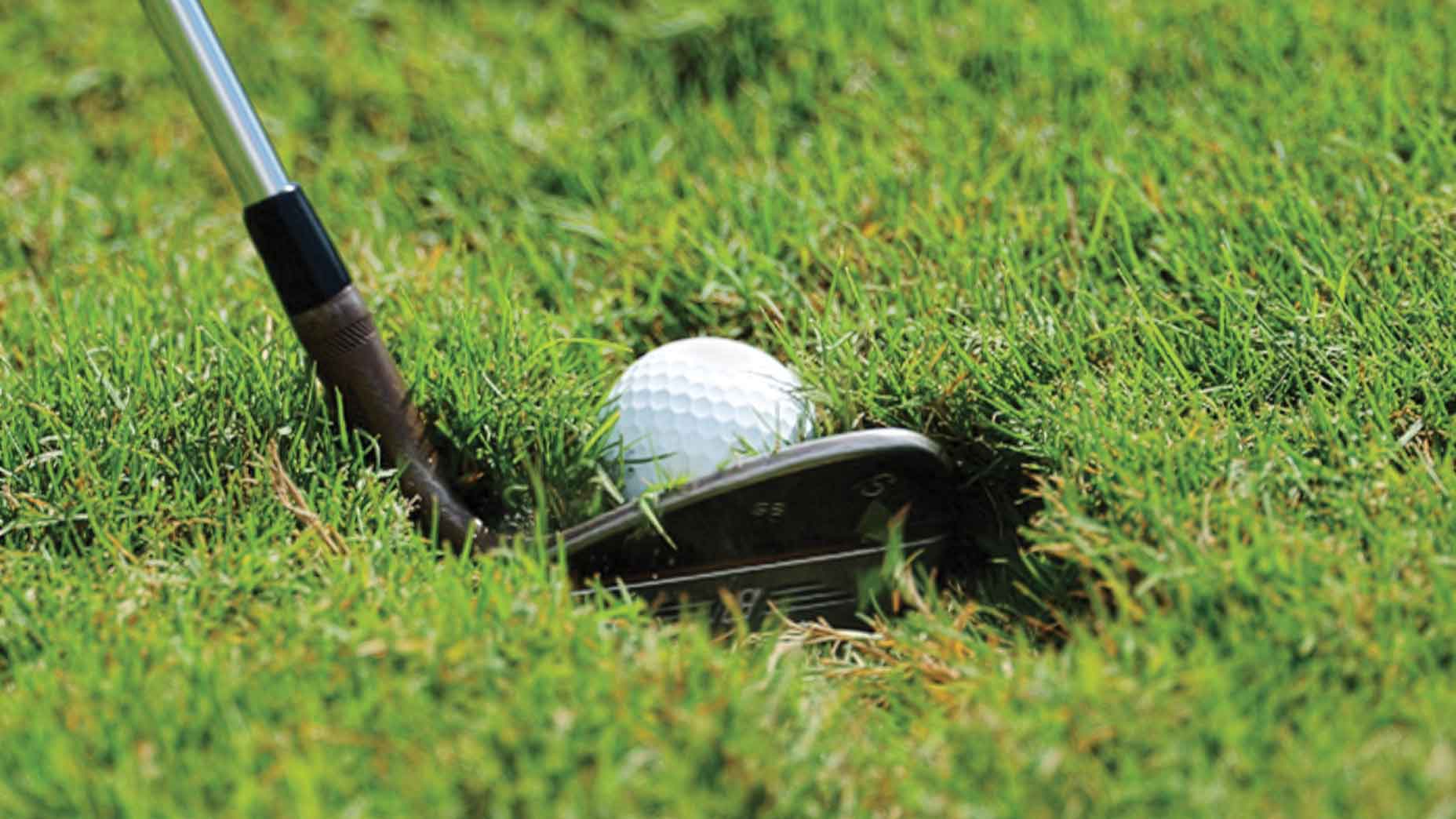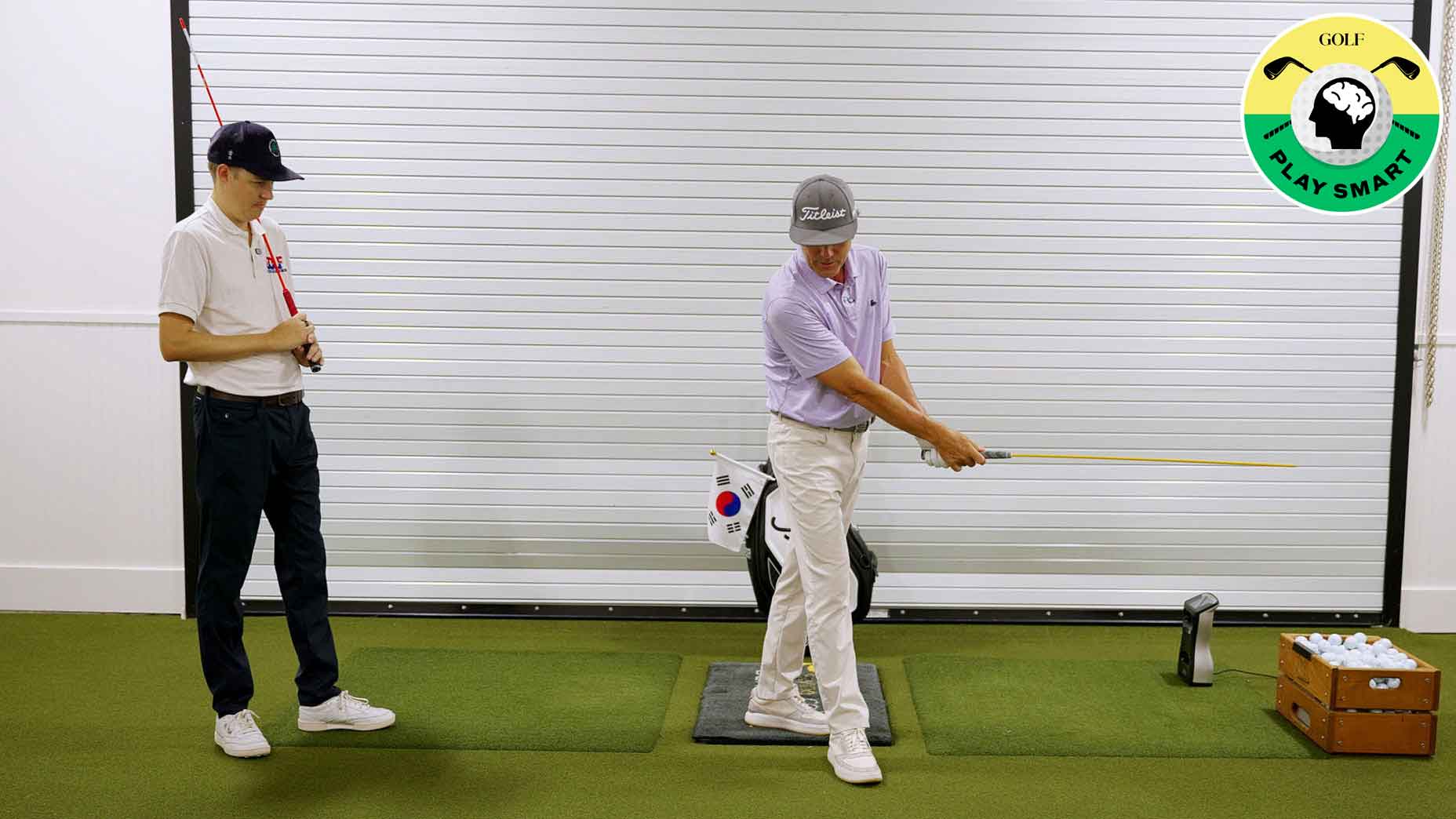Welcome to Play Smart, a game-improvement column that drops every Monday, Wednesday and Friday from Game Improvement Editor Luke Kerr-Dineen (who you can follow on Twitter right here).
I’ve been thinking a lot about my own game recently, and specifically, how to get better. As a former college golfer, there’s an element of rust removal: Working a day job means I’m simply not playing as much as I used to. But I was hardly the perfect golfer in college, either. I’m also trying to improve. All of which begs the rather daunting question: How can I get better at golf now — when I’m older, less in shape, and have less time to practice — than I was then?
Like most golfers, I tend to fall easily down the trap of thinking the straight line of improvement means tinkering around with your golf swing. As Hal Sutton told me recently, that’s really not the case, and most times isn’t really even possible. Sure, there are a handful of things in my swing I know I need to keep an eye on, but the idea of an overhaul isn’t realistic. And the good news is there are more effective ways to improve quickly.
One of those is to practice smarter with the time I do have by targeting the areas of my game that need work.
Which brings me to some interesting data from Arccos, wrangled by the company’s data insights lead Lou Stagner. It seems very unlikely that you’d be reading a nerdy piece of content like this and not follow Lou on Twitter already, but just in case you aren’t, you can follow him right here.
It’s always something I notice anytime he shares a shot dispersion pattern. You can see here…
And here…
And especially here…
Optimal targets are driven by shot patterns.
— Lou Stagner (Golf Stat Pro) (@LouStagner) February 11, 2022
As shot patterns get smaller, you can be more aggressive.
From the same distance, Tour Pros have MUCH smaller shot patterns than amateurs.
Should amateurs use the same targets as Tour Pros?
➡️No
Amateurs need different targets. pic.twitter.com/jJ3a7XaE0w
What I find so interesting about all these, which show all the shots of golfers ranging from a scratch handicap to a 15, is not the quality of the good shots. There are plenty of those, and the good ones really are just as good as the Tour pro equivalent. It’s not even that the pros hit more good shots, though that is undoubtedly true. What stands out most to me is that pros almost never hit really bad, disaster shots. Line up a scratch player from 200 yards, and even they’ll throw in a handful of truly disastrous shots: Shanks, tops, chunks. Pros literally almost never do that, and it underlines an important point that the rest of us need to remember if we harbor any hopes of getting better.
Golfers change all sorts of things in their game to chase that elusive perfect shot, when in reality, avoiding disaster really is the first and most important goal of any golf shot. Disaster golf shots usually mean big numbers, which means unhappy golfers.
As for how you do it? Avoiding disaster shots is, of course, easier said than done. Even scratch players make them, after all. But there are a few things you can keep in mind that help.
How to avoid disaster shots
1. Contact errors are killers
I wrote about the USGA’s distance report last week, and within it was something interesting: That the average driving distance over 207 shots for golfers with a 6-handicap or lower was 239 yards, even though the longest drive measured was 335 yards. How could the best shot be 100 yards longer than the average shot? Because good as that pumped drive was, that 20-yard top you hit a few drives earlier will get averaged in, too.
All of which is to say that the worst kind of disaster shots come from contact errors: whiffs, chunks, shanks, or tops. All of these stem from the simple truth that you’re not hitting the ground in the same spot, consistently. If you can do that, it’s half the battle. This drill will help with that, and so will this.
In the USGA's distance report, I love that the longest drive in the 13 to 20 handicap range is 321 yards, but their average drive is 200 yards.
— LKD (@LukeKerrDineen) March 17, 2022
We all know that guy: Some former college athlete who annihilates a drive 300 yards, then tops one 50 yardshttps://t.co/msDKuG4AXZ pic.twitter.com/JZyy1R0bAr
2. Focus on fundamentals
One of the reasons why amateur golfers struggle to put the clubface on the ball and hit the same spot of the ground consistently is because they’ll often overlook the fundamentals. Grip, posture, distance from the ball, ball position — pros are painstaking in checking these things all the time, and will often build their pre-shot routines around them. Keep a tight handle on yours, and contact errors will become fewer and farther between.
3. Build clubface awareness
The ball will go where the clubface is pointing at impact. It’s really that simple. As Hal Sutton explains, clubface awareness means having a vague sense of where the clubface is throughout your swing. You don’t need to be a Tour player to do this, either. A great place to start is to practice by making lots of slow motion golf swings without a golf ball, paying keen attention to where the clubface is pointing during your swing.
4. Settle on a shot shape
The notion of a two-way miss is more myth than reality. Pros miss it in both directions all the time. But what pros rarely do is hit double crosses. That means lining up to hit a left-to-right fade and hitting a draw, or vice versa. Your shot shape may vary from day to day, but knowing that you’re trying to hit it either slightly left-to-right, or right-to-left, will help you navigate around a golf course.
5. Play towards safety
I always find it funny that recreational golfers will often take more aggressive lines into pins than pros do. Pros aim at middle of greens all the time, and are always trying to avoid the cardinal sins of short-siding themselves and not taking enough club. When in doubt, play safer than you think.










